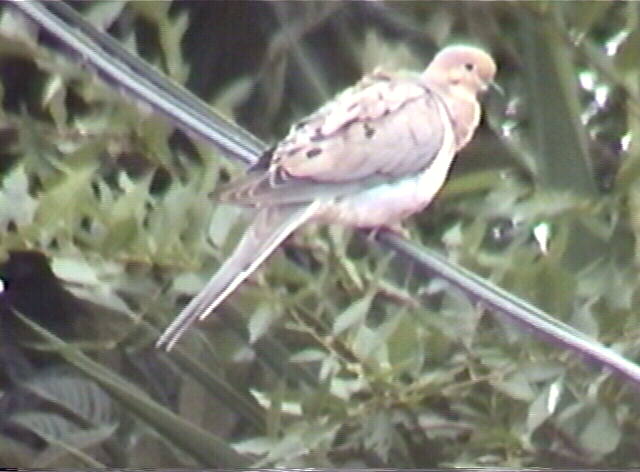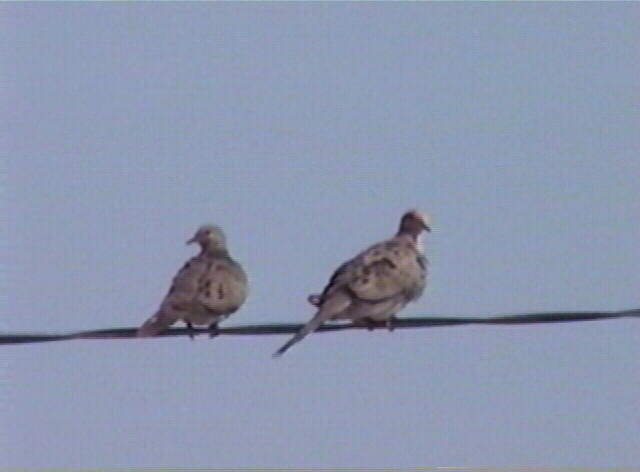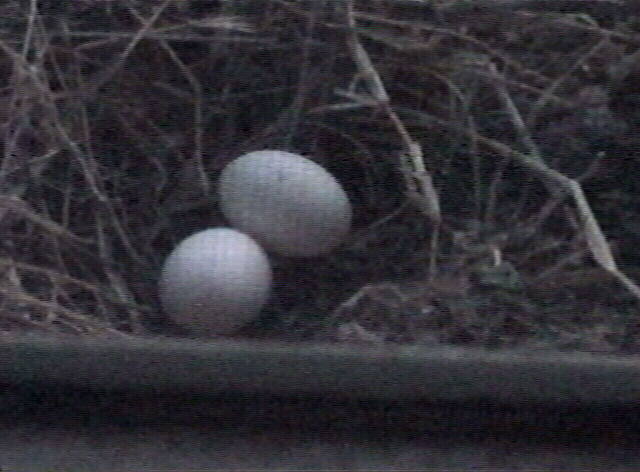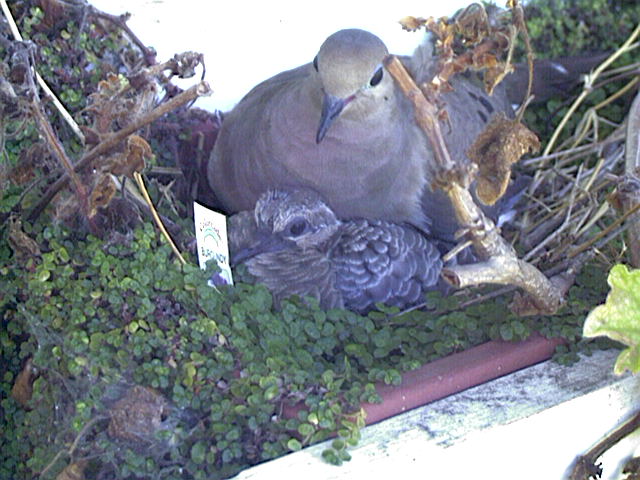|
|
|
The mourning dove is native to
Southern California, but early in the 20th century it was largely
displaced from
the Los Angeles basin by the Chinese spotted dove. In recent
decades
it seems to be making a come back.
 The mourning dove is most easily
distinguished at a distance
by its sharply pointed tail. The spotted dove has a rounded tail,
and the ground dove has a short, squared off tail.
The mourning dove is most easily
distinguished at a distance
by its sharply pointed tail. The spotted dove has a rounded tail,
and the ground dove has a short, squared off tail.
 This pair of mourning doves, female on
the left, male on the
right (probably). Observing them
at close range (2 ft. or so) I was able to distinguish them by
individual
differences in their feathers. I expect that the one which spent
time on the nest while it was empty, and before incubation began was
the
female.
This pair of mourning doves, female on
the left, male on the
right (probably). Observing them
at close range (2 ft. or so) I was able to distinguish them by
individual
differences in their feathers. I expect that the one which spent
time on the nest while it was empty, and before incubation began was
the
female.
 This picture of the eggs was taken
through the open window
minutes before incubation was started. From then, the pair turns
from time to time. But we were never able to observe the shift
change. The birds were aware as we let the grand kids watch
through the closed window. But as long as we moved slowly they
didn't seem concerned.
This picture of the eggs was taken
through the open window
minutes before incubation was started. From then, the pair turns
from time to time. But we were never able to observe the shift
change. The birds were aware as we let the grand kids watch
through the closed window. But as long as we moved slowly they
didn't seem concerned.
 Having accustomed them to my presence,
I was able take this
picture of the young from outside, at
about 4 ft. I was also able to run the lawn mower right under the
window box without alarming the birds. The next year the same
pair returned and raised four broods on our front porch. For more
information about these doves, see The Return
of Mourning Doves.
Having accustomed them to my presence,
I was able take this
picture of the young from outside, at
about 4 ft. I was also able to run the lawn mower right under the
window box without alarming the birds. The next year the same
pair returned and raised four broods on our front porch. For more
information about these doves, see The Return
of Mourning Doves.
[Taxonomy
: Classification]
[Birds] [ Back Yard Biology]
[ Science
Can Be Fun]